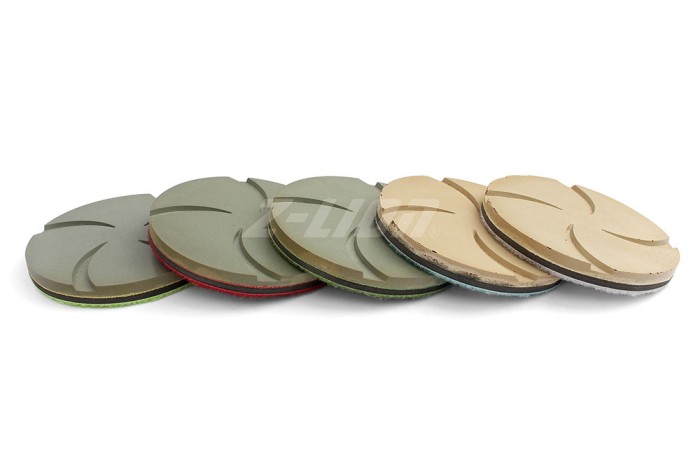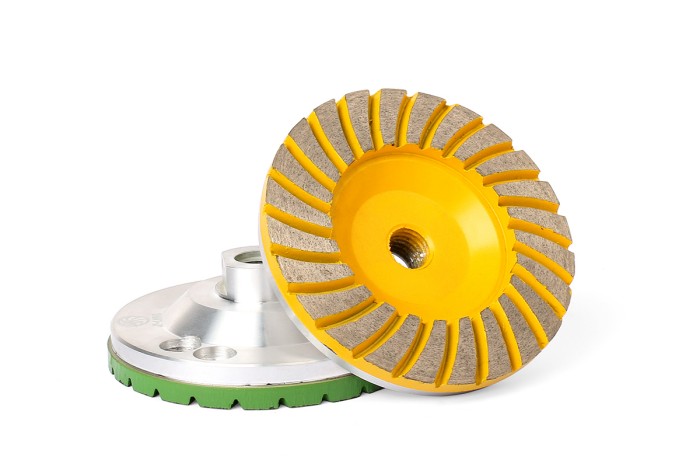What Is the Principle of Diamond Grinding Wheel?
The diamond grinding wheel is a specialized tool that uses diamond as an abrasive to efficiently grind and shape a variety of hard materials. Its unique properties and structure enable it to work efficiently in demanding applications.
The Basic Principle of Diamond Grinding Wheel
1. Cutting principle
The main feature of diamond grinding wheels is the use of diamond particles as abrasives. Diamond has a Mohs hardness rating of about 10, making it the hardest material known. This exceptional hardness enables diamond grinding wheels to effectively cut a variety of superhard materials, including:
Carbide: Carbide is commonly used in cutting tools and wear-resistant applications and is challenging to grind, so diamond wheels are an ideal choice.
Ceramic: The high hardness of ceramics requires specialized grinding tools, and diamond wheels excel in this regard.
Glass: Diamond wheels also effectively grind and shape glass, providing clean, precise cuts.
During the grinding process, diamond particles perform a cutting action, removing material from the workpiece surface to achieve the desired shape and finish.
2. Abrasive machining
Contact with workpiece
As the diamond wheel rotates, the sharp cutting edges of the diamond particles come into contact with the workpiece surface. The high hardness of diamond enables these particles to effectively penetrate the material and remove layers of material to achieve the desired surface shape and roughness.
Material Removal: The cutting action of the diamond particles removes small pieces of material from the workpiece, resulting in a smooth and precise surface. The efficiency of the process is largely due to the sharpness and hardness of the diamond, which allows for effective material removal without the need for excessive force.
Surface shaping
The ability of diamond grinding wheels to precisely shape surfaces is critical in a variety of applications, including precision machining and finishing. The grinding process can be customized to achieve specific surface finishes and geometric tolerances, making diamond grinding wheels suitable for high-precision tasks in industries such as aerospace, automotive and mold making.
3. Abrasive debris removal
Self-healing capability
During the grinding process, the diamond particles gradually wear out and become dull due to the constant cutting action. However, the unique structure of the diamond grinding wheel allows for a self-healing mechanism:
Grit Shedding: As the abrasive grains wear, some of them break away from the wheel surface. This shedding reveals new, sharp diamond grains beneath the surface, ensuring the wheel maintains its cutting efficiency throughout its life.
Continuous cutting capability
This self-healing ability is a major advantage of diamond grinding wheels. By continuously revealing new cutting edges, these wheels can maintain high cutting efficiency and performance over long periods of use. This feature is particularly beneficial in high-volume production environments where consistent results are critical.
Structure of Diamond Grinding Wheel
1. Abrasive layer
The abrasive layer is the outermost layer of the diamond grinding wheel, where the diamond particles are embedded. During the manufacturing process, these diamond particles are embedded in a matrix material, which can be made of resin, metal or ceramic. The choice of base material can significantly affect the performance characteristics of the grinding wheel, including:
Strength: The base material provides the structural integrity of the grinding wheel, ensuring that it can withstand the forces generated during grinding operations.
Toughness: Tough matrix material helps absorb shock and vibration, which can enhance the durability of the grinding wheel.
Fixing Effect: The matrix also acts to firmly hold the diamond particles in place, preventing them from falling off during use.
The composition of the abrasive layer directly affects the grinding efficiency, cutting speed and overall performance of the diamond grinding wheel.
2. Bonded
The bond is a key ingredient used to secure the diamond particles to the grinding wheel base. The choice of binder material can have a profound impact on the characteristics of the grinding wheel, including its service life, grinding performance and thermal management capabilities. Common adhesive types include:
Resin Bonded: Resin binders are often used for flexibility and the ability to provide a fine finish. Resin bonded grinding wheels are suitable for precision grinding applications and are known for their ability to produce smooth surfaces.
Metal Bonded: Metal bonded grinding wheels are known for their durability and strength, making them ideal for heavy-duty applications. They are particularly effective for grinding hard materials and can withstand high temperatures.
Ceramic Bonded: These adhesives provide a balance between strength and flexibility, with good wear resistance and thermal stability. They are commonly used in applications requiring high precision and durability.
The properties of the binder affect how well the diamond particles are held in place, the wear rate of the grinding wheel, and the ability to control heat during grinding.
3. Structural design
Diamond grinding wheels can be manufactured in a variety of shapes and structural designs to meet specific machining requirements. Some common types include:
Flat Grinding Wheel: Used in surface grinding applications to provide a flat surface to the workpiece.

Cup Wheels: Cup wheels are designed for grinding curved surfaces and are commonly used in applications such as grinding and shaping.

Angle Grinder Wheels: These wheels are designed for use with angle grinders and are suitable for a variety of grinding tasks, including cutting and finishing.
The structural design of the grinding wheel is optimized by the manufacturer to improve cutting performance and processing efficiency. Factors such as wheel diameter, thickness and shape can all be customized to the specific application, ensuring the wheel is effective for its intended use.
Cutting Process of Diamond Grinding Wheel
1. Cutting mechanism
The cutting process of a diamond wheel involves the interaction between the diamond particles and the workpiece material. As the wheel rotates, the sharp edges of the diamond particles come into contact with the workpiece surface. Due to the extremely high hardness and sharpness of diamond, these particles can effectively penetrate the material, removing small chips and surface material layers.
2. Thermal Management
During the grinding process, a lot of heat is generated due to the friction between the diamond particles and the workpiece material. Effective heat management is essential to prevent overheating, which can lead to several problems:
Workpiece deformation: Overheating will cause thermal expansion, resulting in bending or deformation of the workpiece, thus affecting its dimensional accuracy.
Abrasive Degradation: High temperatures can degrade diamond particles, reducing their effectiveness and cutting ability over time.
Grinding Wheel Damage: Overheating can also damage the grinding wheel itself, causing premature wear or failure.
Thermal Management Strategy
Coolant Use: Using coolant during the grinding process helps dissipate heat, lubricate the cutting area and reduce friction. This practice not only protects the workpiece and grinding wheel, but also improves overall grinding efficiency.
Optimize Grinding Parameters: Adjusting parameters such as feed rate, depth of cut and wheel speed can help control heat generation. Finding the right balance ensures efficient material removal while minimizing heat build-up.
3. Chip removal capability
Importance of chip removal
During the grinding process, effective chip removal is essential to maintaining optimal cutting performance. As diamond particles cut through the workpiece, they create chips that accumulate in the cutting area. If not removed, these chips can impede the cutting action, resulting in reduced efficiency and possible damage to the workpiece and grinding wheel.
Characteristics of diamond grinding wheel
Diamond grinding wheels have design features that enhance their chip evacuation capabilities:
Open Structure: Many diamond wheels have an open structure to allow for better chip evacuation. This design helps prevent clogging and ensures the cutting area remains clear.
High Cutting Efficiency: The sharpness of the diamond particles helps to effectively remove chips. When the grinding wheel cuts, the chips generated are easily discharged from the cutting area, thus maintaining a clean working environment.
Continuous Cutting Action: The ability to effectively remove chips allows the diamond wheel to maintain a consistent cutting action, ensuring high-quality results throughout the grinding process.
-
Online service
-
Official wechat account

-
QQ:40933769
-
E-mail:sales@z-lion.com
Online Message
Please feel free to give your inquiry in the form below. We will reply you in 24 hours.

